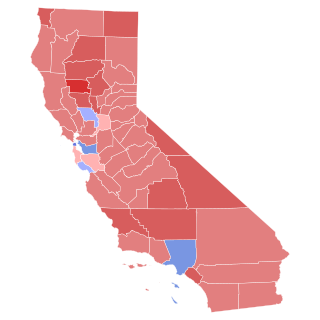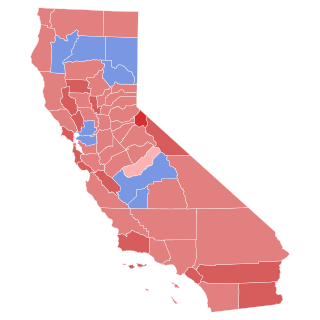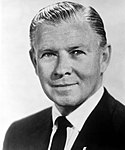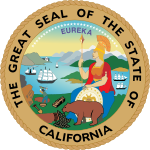
John Varick Tunney was an American politician who served as a United States Senator and Representative from the state of California in the 1960s and 1970s.

The 1988 United States Senate elections was an election for the United States Senate. Held on November 8, the 33 seats of Class 1 were contested in regular elections. In spite of the Republican victory by George H. W. Bush in the presidential election, the Democrats gained a net of one seat in the Senate. Seven seats changed parties, with four incumbents being defeated. The Democratic majority in the Senate increased by one to 55–to–45.

The 1982 United States Senate elections were held on November 2, 1982. They were elections for the United States Senate following Republican gains in 1980. The 33 Senate seats of Class 1 were up for election in 1982. A total of four seats changed hands between parties, with Democrats winning seats in New Jersey and New Mexico, and Republicans taking seats in Nevada and the seat of the lone independent, Senator Harry Byrd Jr., in Virginia. Democrats made a net gain of one seat in the elections, while Republicans stayed at 54 seats for a majority. A special election was also held in Washington state in 1983 that gave Republicans a seat that was previously held by a Democrat, bringing their majority to 55-45.

The 1976 United States Senate elections was an election for the United States Senate. Held on November 2, the 33 seats of Class 1 were contested in regular elections. They coincided with Democrat Jimmy Carter's presidential election and the United States Bicentennial celebration. Although almost half of the seats decided in this election changed parties, Carter's narrow victory did not provide coattails for the Democratic Party.

The 1970 United States Senate elections was an election for the United States Senate. It took place on November 3, with the 33 seats of Class 1 contested in regular elections. Special elections were also held to fill vacancies. These races occurred in the middle of Richard Nixon's first term as president. The Democrats lost a net of three seats, while the Republicans and the Conservative Party of New York picked up one net seat each, and former Democrat Harry F. Byrd Jr. was re-elected as an independent.

The 1964 United States Senate elections were held on November 3. The 33 seats of Class 1 were contested in regular elections. Special elections were also held to fill vacancies. They coincided with the election of President Lyndon B. Johnson by an overwhelming majority, to a full term. His Democratic Party picked up a net two seats from the Republicans. As of 2022, this was the last time either party has had a two-thirds majority in the Senate, which would have hypothetically allowed the Senate Democrats to override a veto, propose constitutional amendments, convict and expel certain officials, or invoke cloture without any votes from Senate Republicans. In practice, however, internal divisions effectively prevented the Democrats from doing so. The Senate election coincided with Democratic gains in the House in the same year.

The 1962 United States Senate elections was an election for the United States Senate. Held on November 6, the 34 seats of Class 3 were contested in regular elections. Special elections were also held to fill vacancies. They occurred in the middle of President John F. Kennedy's term. His Democratic Party made a net gain of four seats from the Republicans, increasing their control of the Senate to 68-32. However, this was reduced to 67-33 between the election and the next Congress, as on November 18, 1962, Democrat Dennis Chávez, who was not up for election that year, died. He was replaced on November 30, 1962, by Republican appointee Edwin L. Mechem. This was the first time since 1932 that Democrats gained seats in this class of Senators.

The 1954 United States Senate elections was a midterm election in the first term of Dwight D. Eisenhower's presidency. The 32 Senate seats of Class 2 were contested in regular elections, and six special elections were held to fill vacancies. Eisenhower's Republican party lost a net of two seats to the Democratic opposition. This small change was just enough to give Democrats control of the chamber with the support of an Independent who caucused with them.

George Edward Brown Jr. was an American Democratic politician from California. He represented suburban portions of Los Angeles County in the United States House of Representatives from 1963 to 1971 and parts of the Inland Empire region from 1973 until his death in 1999. He briefly left office after unsuccessfully running for United States Senate in 1970.

The 1992 United States Senate election in California took place on November 3, 1992, at the same time as the special election to the United States Senate in California. Incumbent Democrat Alan Cranston decided to retire. Democrat Barbara Boxer won the open seat. This election was noted as both of California's senators were elected for the first time. This is not a unique occurrence; it would happen again in Tennessee in 1994, Kansas in 1996, and Georgia in 2021. Fellow Democrat Dianne Feinstein, California's senior senator, won the special election and was inaugurated in November 1992.

The 1986 United States Senate election in California took place on November 4, 1986. Incumbent Democratic U.S. Senator Alan Cranston narrowly won re-election to a fourth and final term over Republican U.S. Congressman Ed Zschau.

The 1988 United States Senate election in California took place on November 8, 1988. Incumbent Republican U.S. Senator Pete Wilson won re-election to a second term.

The 1982 United States Senate election in California took place on November 2, 1982. Incumbent Republican U.S. Senator S. I. Hayakawa decided to retire after one term. Republican Pete Wilson, the Mayor of San Diego, won Hayakawa's open seat over Democratic Governor Jerry Brown and several minor candidates.

The 1976 United States Senate election in California took place on November 2, 1976. Incumbent Democratic U.S. Senator John V. Tunney ran for re-election to a second term, but was defeated by Republican S. I. Hayakawa. As of 2023, this is the last time an incumbent Democratic Senator from California lost re-election.

The 2018 United States Senate election in California took place on November 6, 2018, to elect a member of the United States Senate to represent California, concurrently with other elections to the United States Senate, elections to the United States House of Representatives, and various state and local elections.

Two 2022 United States Senate elections in California were held concurrently on November 8, 2022, to elect a member of the United States Senate to represent the State of California. There were two ballot items for the same Class 3 seat: a special election to fill the seat for the final weeks of the 117th United States Congress, and a general election for a full term, starting in the 118th United States Congress.

The 1944 United States Senate election in California was held on November 7, 1944.

The two 1946 United States Senate elections in California were held concurrently on November 5, 1946.

The 1964 United States Senate election in California was held on November 3, 1964.

The 1968 United States Senate election in California was held on November 5, 1968.























